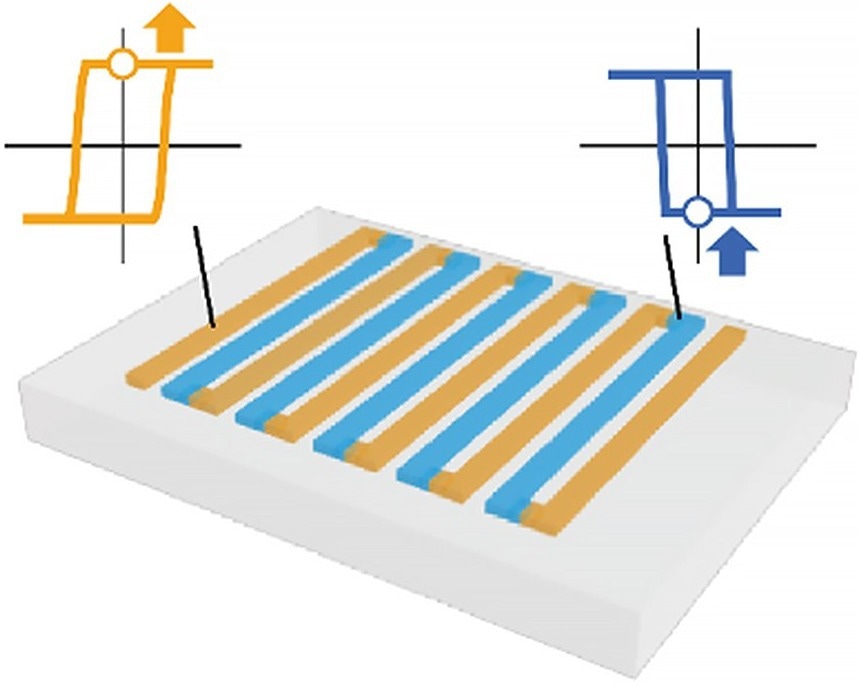Scientists are investigating materials, or thermoelectric materials, that can effectively convert heat into electricity in an effort to maximize energy consumption. Due to its manifestation of the anomalous Nernst effect, a specific type of magnet, known as topological magnet, is gaining a lot of interest. In a ferromagnetic material, the anomalous Nernst effect produces a voltage that is perpendicular to both the applied magnetic field and the temperature gradient.

Thermopile device composed of two materials with opposite polarities of thermoelectric voltage generation by the anomalous Nerst effect. Image Credit: Fujiwara et al.
While mixing layers with various thermopower signs in thermopile devices has resulted in certain devices demonstrating enhanced performance, this method often necessitates the use of alternative materials and modifications to the production process.
In a major development, a cooperative research team has shown that they can use a unique substance called Co3Sn2S2, which is recognized for its topological magnet capabilities, to produce both positive and negative polarities while producing electricity from heat. All it took to make this breakthrough was to replace a few components in the magnetic compound.
The group consisted of Associate Professor Yuki Yanagi from Toyama Prefectural University, Researcher Takamasa Hirai and Distinguished Group Leader Ken-ichi Uchida from the National Institute for Materials Science (NIMS), and Associate Professor Kohei Fujiwara and Professor Atsushi Tsukazaki from Tohoku University’s Institute for Materials Research (IMR).
On January 8th, 2024, their findings were published in the journal Nature Physics.
We focused on a cobalt-tin-sulfur-based ferromagnet because its topological electronic state is suited to control the polarity of the anomalous Nernst effect according to our previous theoretical study.
Kohei Fujiwara, Associate Professor, Institute for Materials Research, Tohoku University
The scientists used a technique often used in semiconductor manufacturing, elemental substitution using thin-film growth techniques, to test their notion. They found that the modification of the topological electronic state caused a reversal in the sign of thermoelectric voltage when nickel and indium were appropriately substituted.
“The availability of common base elements for the fabrication of thermopile devices will contribute to the reduction of resources and costs. Our concept will apply to other topological magnets and accelerate the development of superior magneto-thermoelectric materials,” Fujiwara concluded.
Journal Reference
Noguchi, S., et. al. (2024) Bipolarity of large anomalous Nernst effect in Weyl magnet-based alloy films. Nature Physics. doi:10.1038/s41567-023-02293-z
Article Revisions
- Jan 6 2025 - Meta Description has been updated to fall inline with Google recommendations and a malformed link has been repaired.